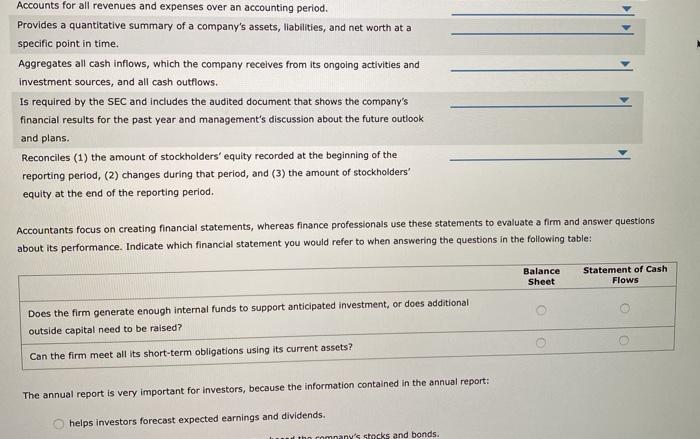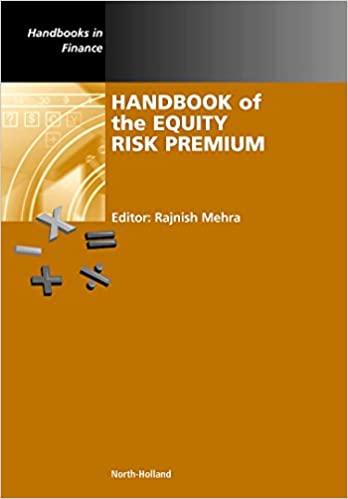What happened to assets, earnings, dividends, and cash flows during the financial year? Accounting practice in the United States follows the generally accepted accounting principles (GAAP) developed by the Financial Accounting Standards Board (FASB), which is a nongovernmental, professional standards body that monitors accounting practices and evaluates controversial issues. The Securities and Exchange Commission (SEC) requires all publicly traded companies to periodically report their financial information A publicly held corporation must publish an annual report that contains the balance sheet, Income statement, statement of cath flows, statement of stockholders' equity, and other financial Information for analysis. The following table lists descriptions of the major financial statements and reports that a firm publishes. Identify the correct statement or report for each description Statement or Report Description Accounts for all revenues and expenses over an accounting period. Provides a quantitative summary of a company's assets, liabilities, and net worth at a specific point in time. Aggregates all cash inflows, which the company receives from its ongoing activities and investment sources, and all cash outflows. is required by the SEC and includes the audited document that shows the company's financial results for the past year and management's discussion about the future outlook and plans. Reconciles (1) the amount of stockholders' equity recorded at the beginning of the reporting period, (2) changes during that period, and (3) the amount of stockholders' equity at the end of the reporting period. Accountants focus on creating financial statements, whereas finance professionals use these statements to evaluate a firm and answer questions about its performance Indicate which financial statement you would refer to when answering the questions in the following table: Balance Sheet Statement of Cash Flows Does the firm generate enough internal funds to support anticipated investment, or does additional Accounts for all revenues and expenses over an accounting period. Provides a quantitative summary of a company's assets, liabilities, and net worth at a specific point in time. Aggregates all cash inflows, which the company receives from its ongoing activities and investment sources, and all cash outflows. Is required by the SEC and includes the audited document that shows the company's financial results for the past year and management's discussion about the future outlook and plans. Reconciles (1) the amount of stockholders' equity recorded at the beginning of the reporting period, (2) changes during that period, and (3) the amount of stockholders' equity at the end of the reporting period. Accountants focus on creating financial statements, whereas finance professionals use these statements to evaluate a firm and answer questions about its performance. Indicate which financial statement you would refer to when answering the questions in the following table: Balance Sheet Statement of Cash Flows Does the firm generate enough internal funds to support anticipated investment, or does additional outside capital need to be raised? Can the firm meet all its short-term obligations using its current assets? The annual report is very important for investors, because the information contained in the annual report: helps investors forecast expected earnings and dividends. thn romnany's stocks and bonds








